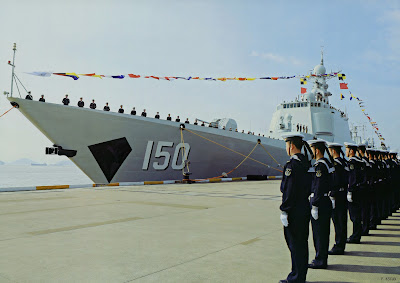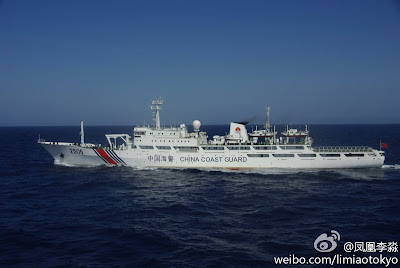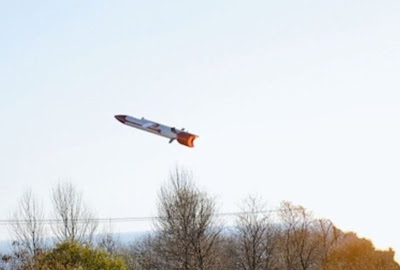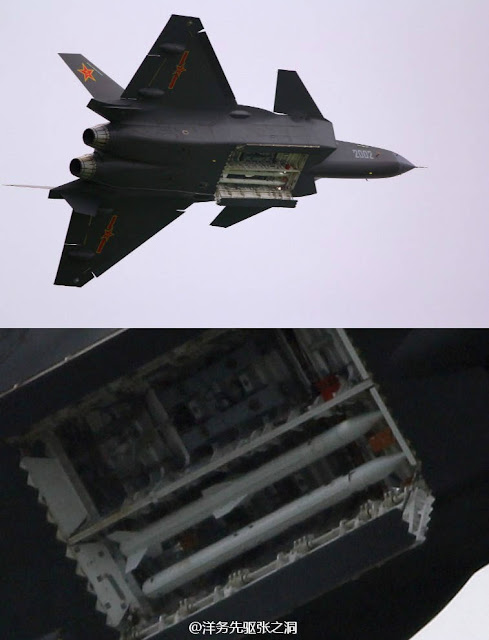Jul 31, 2013
Jul 29, 2013
Indian Army Mistook Planets For Chinese Spy Drones For Six Months
 |
| Indian Army at Disputed Himalayan Borders |
India's army reportedly spent six months watching "Chinese spy drones" violating its air space, only to find out they were actually Jupiter and Venus.
Tensions have been high in the disputed Himalayan border area between the two nations in recent years, with India frequently accusing its neighbour of making incursions onto its territory. Things came to a head during a stand-off in April when Chinese troops were accused of erecting a camp on the Indian side of the de facto boundary known as the Line of Actual Control (LAC). By that stage, Indian troops had already documented 329 sightings of unidentified objects over a lake in the border region, between last August and February, according to the Calcutta-based Telegraph.
Jul 28, 2013
Rafale Jet Deal Put On the Back Burner
French Defence Minister Jean-Yves Le Drian came to Delhi, charmed his counterpart A K Antony, but could not conquer.
After three days in India, when he held formal talks with the Indian defence ministry top brass and also lectured the Indian military think-tank IDSA, Le Drian returned home Saturday empty-handed, without even the Rs 1 lakh crore combat jets deal for which French Rafale was chosen as the lowest bidder in January 2012.
Apart from pitching for broader defence ties, Le Drian had to admit he faced the risk of disappointing the discerning strategic thinkers and defence watchers in India and France on the “priority” Medium Multi Role Combat Aircraft (MMRCA) contract.
“Of course, the MMRCA project is the priority. At the risk of disappointing you, I will not be announcing the date of signing the contract,” Le Drian said at IDSA.
The bottom line is: The “most important defence deal in history” to supply Rafale for the Indian Air Force (IAF) may not happen in the near future or during the 2013-14 fiscal, or even during the tenure of the present UPA II government that ends next May.
There were enough signals in this regard during Le Drian’s stay in the Indian capital and during his and his officials’ interaction with the media and the intelligentsia. Le Drian, however, exuded confidence that the contract itself, which was bagged by French firm Dassault Aviation, was not in trouble over the poor financial state of the company.
Dassault Aviation’s Rafale plane had won the stiffly fought four-and-a-half-year contest against European consortium EADS Cassidian’s Eurofighter Typhoon, American major Boeing’s F/A-18 and Lockheed Martin’s F-16, Russian United Aircraft Corporation’s MiG-35 and Swedish Saab’s Gripen.
Indian Army Recruitment Advertisement--Looks Funny....
 |
| Indian Army Recruitment Advertisement |
Jul 25, 2013
China To deploy New Type of Strategic Missile Submarines From 2014
 |
| Type 094 Missile Submarine (SSBN) |
China’s navy is expected to begin the first sea patrols next year of a new class of strategic missile submarines, highlighting a new and growing missile threat to the U.S. homeland, according to U.S. defense officials.
“We are anticipating that combat patrols of submarines carrying the new JL-2 submarine-launched ballistic missile will begin next year,” said one official familiar with recent intelligence assessments of the Chinese strategic submarine force.
China’s strategic missile submarine force currently includes three new Type 094 missile submarines each built with 12 missile launch tubes.
The submarine patrols will include scores of new JL-2 submarine-launched ballistic missiles (SLBMs) on the Type 094s. The submarines are also called Jin-class missile boats by the Pentagon.
The missile submarine patrols, if carried out in 2014, would be the first time China conducts submarine operations involving nuclear-tipped missiles far from Chinese shores despite having a small missile submarine force since the late 1980s.
The Washington Free Beacon first reported in August that China carried out a rare flight test that month of the JL-2, a missile analysts say will likely be equipped with multiple warheads.
That test was carried out in the Bohai Sea near the northeastern coast of China, according to officials familiar with reports of the test.
Defense officials said the JL-2 poses a “potential first strike” nuclear missile threat to the United States and is one of four new types of long-range missiles in China’s growing strategic nuclear arsenal.
The Air Force National Air and Space Intelligence Center earlier this month published a report on missile threats that identified the JL-2 a weapon that “will, for the first time, allow Chinese SSBNs to target portions of the United States from operating areas located near the Chinese coast.” SSBN is a military acronym for nuclear missile submarine.
The Pentagon’s most recent annual report on China’s military stated that Beijing’s Navy has placed a high priority on building up submarine forces.
In addition to the three Type 094s currently deployed, China will add at least two more of the submarines before deploying a new generation missile submarine dubbed the Type 096, the report stated. It was the first time the Pentagon has revealed the existence of the follow-on strategic missile submarine.
“The JIN-class and the JL-2 will give the PLA Navy its first credible sea-based nuclear deterrent,” the Pentagon report said.
Chinese AVIC International Acquires German Engine Manufacturer
AVIC International Holding Corporation (AVIC International) pulled off its acquisition through its subsidiary, Technify Motors GmbH, of the diesel aircraft engine and manufacturing assets of the former Thielert Aircraft Engines GmbH (Thielert), Ma Fu'an, chairman of the AVIC Board of Directors, announced Tuesday in St. Egidien, Saxony, Germany.
In a strong bid to enhance its already strong capabilities in general aviation piston aircraft engine technology, AVIC fully taps this acquisition to add the Centurion line of the electronically controlled Jet-A (diesel/kerosene) piston engines to its portfolio of general aviation piston engine technology.
Acquired products also include the certified Centurion 2.0 series of 135 Hp and 155 Hp Jet-A engines and the certified Centurion 4.0, 350 Hp engine, the AVIC announced.
The Centurions has seen nearly 3,500 units fielded during its almost ten year service history. The addition of the technologically advanced Jet-A fueled piston engines provides a global fuel capability that AVIC International believes will accelerate emerging market adoption of piston powered aircraft.
"AVIC International's acquisition of Thielert's assets rounds out the highly successful and popular Continental Motors' line of gasoline engines acquired by AVIC International in 2011" said Yu Yimin, senior vice president of AVIC International, and chairman and chief executive officer of Continental Motors, Inc.
"It is also the right long-term solution for the market, as this creates a "one stop shop" for both AVGAS and Jet-A engine solutions backed by the global support capabilities of Continental Motors," Yu added.
Jul 20, 2013
Russia To Buy Aerial Drones United 40 Block 5 From UAE
 |
| UAE 's United 40 Block 5 UAV |
The Russian military is planning to purchase aerial drones in the United Arab Emirates, a defense industry source said Wednesday.
“We are talking about at least two United 40 Block 5 models developed by the company ADCOM Systems,” the source, who preferred to remain anonymous, told RIA Novosti.
United 40 is a medium-altitude, long-endurance unmanned aerial vehicle (UAV), designed to carry out near real-time combat assessment, special and reconnaissance operations and communications relays.
The vehicle can carry up to 10 air-to-ground missiles with a delivery range of 60 kilometers and fly for up to 120 hours, according to the developer.
The United 40 Block 5 model was unveiled at this year’s IDEX arms show in Abu Dhabi in February, and the vehicle was first tested in flight in March. Its estimated cost is $20-30 million.
The Russian military stressed a need for advanced reconnaissance systems in the wake of a brief military conflict with Georgia in August 2008, when the effectiveness of Russian military operations was severely hampered by a lack of reliable intelligence.
According to various estimates, the Russian military needs up to 100 UAVs and at least 10 guidance and control systems to ensure effective battlefield reconnaissance.
Russian Defense Minister Sergei Shoigu said in June that aerial drones being developed in Russia for the military were inferior to similar foreign models.
Russia has reportedly signed two UAV contracts with Israel. Under the first contract, signed in April 2009, Israel delivered two Bird Eye 400 systems (worth $4 million), eight I View MK150 tactical UAVs ($37 million) and two Searcher Mk II multi-mission UAVs ($12 million).
The second contract was for the purchase of 36 UAVs, worth a total of $100 million, to be delivered in 2010. The shipment, however, has not been confirmed by the Russian Defense Ministry.
Jul 19, 2013
New Chinese J-17----Russian Su-34 Like Fighter Jet
 |
| J-17 Su-34 Like Fighter Jet |
China is in advanced development of the bomber / strike variant of the FLANKER family, namely the Su-34 NATO designated FULLBACK. China watchers have seen the FLANKER series copied in the form of the J-11 and J-15. While details are sketchy, it is believed from internet sources that the variant is being modeled on the Russian Su-34 FULLBACK.
This suggest extreme range and payload, with an emphasis on strike. Whether China goes for a low-level strike focus like the Su-32/34 is open to debate, and it seems more likely that China will prefer a high altitude profile and emphasize on striking within the 3rd Island chain, and potentially beyond. This could mean that the specialized inlets of the Su-34 may not be patterned, nor the side-by-side seating arrangement.
Jul 17, 2013
Russian Scholar Says America Used Weather Control Weapon In Pakistan In 2012
HAARP stands for High-frequency Active Auroral Research Program. A secret project where human can control weather.
HAARP have been kept secret but by the time secrets are coming out. This weapons have been in testing and used by some countries against others to send earthquakes/heavy rain storms/wind storms/lightning storms/tsunami/volcano etc.
In 1915 American scientist Nikola Tesla presented theory to control weather and use it as weapon. Pentagon started researching about it to make weather control weapon, a weapon superior to nuclear weapons.
America kept refusing about this project but several secrets were revealed by the time that America is working interestingly on HAARP project and wants to make a powerful weather controlling weapon for US military till 2020.
Several private organizations who want control over oil of other countries have been secretly funding this project for America. Later these years USA admitted officially that US army, US navy and US air force are also funding this project.
Russian intelligence agency GRU revealed that once an American senator Ted Stevens who was against HAARP and was investigating about it, he was murdered. GRU also revealed that from the investigations of Ted Stevens America is controlling HAARP from a secret base in US state Alaska.
GRU intelligence also revealed that another person in contact with Ted Stevens, Major Aaron Malone who was working as guard in Alaska Air National was murdered by the secret weapon attack "Tesla" (a laser beam fired from satellite) on his C17 aircraft.
Chinese Long March 5 Rocket Engine Test a Big Step for Space Station Project
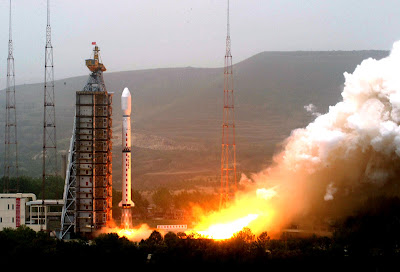 |
| Long March 5 Rocket |
China has successfully test-fired the rocket engine that will power the next-generation heavy-lift booster, the Long March 5, that will help drive the country's space exploration into the final frontier.
The new rocket engine is closely tied to China's planned space station, and is a big step forward for the country's moon exploration program. The first engine test, carried out on June 29, lasted roughly three minutes from ignition to shutdown, according to the China Manned Space Engineering Office.
Jul 15, 2013
Indian 5th-generation fighter plan hits air pocket as Russia hikes cost
 |
| Indo-Russian FGFA Fighter Jet |
 |
| Indo-Russian FGFA Fighter Jet |
Defence ministry sources said the inking of the final design and R&D contract for the stealth fighter has been hit by a huge delay, with Russia also jacking up costs for the futuristic project. "It's very unlikely the FGFA final design contract will be concluded in the 2013-2014 fiscal," said a source.
This contract was to be inked in 2012 as per the then revised timeline after completion of the preliminary design contract (PD C) phase. India will eventually end up spending close to $35 billion over the next two decades to induct over 200 such "swing-role" fighters.
The plan till last year was that India would begin inducting the FGFA from 2022 onwards, with IAF test pilots getting three prototypes in 2014, 2017 and 2019 for trials at the Hindustan Aeronautics manufacturing facility at Ozar.
"The timeframes will now have to be revised. MoD has established a committee of specialists and finance officials to verify the rise in costs. An internal contract negotiation committee is also in progress," said the source.
But India remains firm about rejecting the US offer for joining its Joint Strike Fighter (JSF) or the F-35 'Lightning-II' programme. "A lot of money and time has been invested in the FGFA with Russia. India simply cannot afford two FGFAs, both financially as well as logistically" he said.
The 18-month PDC worth $295 million for the FGFA with Russia was inked in December 2010, under which Indian designers and scientists have even been stationed in Russia to work out the blueprints and documentation for the fighter.
Jul 13, 2013
China Plans World's Longest Sea Tunnel At A Cost Of $42 Billion
China will invest 260 billion yuan, or about $42 billion (27.7 billion pounds), to revive a long-stalled plan to build the world's longest undersea tunnel across the Bohai Strait linking the country's eastern and northeastern regions, state media said on Thursday.
The 123-km (76.4-mile) tunnel will run from the port city of Dalian in northeastern Liaoning province to Yantai city in eastern Shandong, the China Economic Net website said.
The report did not say when the project will be completed.
China announced plans in 1994 to build the tunnel, at a cost of $10 billion, and set to be completed before 2010. But more than 20 years on, the project remains stuck in the planning stage, the website said, without elaborating.
At the time, state media said the tunnel would shorten the travelling distance between the two regions by 620 miles.
The costs could be recouped in 12 years, said Wang Mengshu, a member of the Chinese Academy of Engineering, who estimated annual revenues from the tunnel at around 20 billion yuan, the website said. "Freight is very profitable," Wang said.
Jul 8, 2013
Jul 7, 2013
China Worried About Cyber Security
A Foreign Ministry spokeswoman said Monday that the Chinese government is worried about recent negative developments in cyber security.
Spokeswoman Hua Chunying made the remarks at a regular press briefing in response to a question regarding an alleged Chinese cyber attack directed at Germany.
Hua said some countries have treated cyberspace as a new battlefield, justifying their efforts to build up their own cyber arsenals by making their own rules for how cyberspace should be treated.
Hua said these activities have increased the risk for a potential conflict.
She said the cyber espionage conducted by some countries represents an attempt to divert attention from real problems and will not help to create a cooperative international atmosphere.
United States To Lease Nuclear Submarine To Australia
 |
| US Nuclear Submarine |
The United States has indicated for the first time it would be willing to lease or sell a nuclear submarine to Australia in a move that will inflame tensions with China and force the Coalition to declare its policy on bolstering regional defence.
US Ambassador to Australia Jeffrey Bleich told The Australian Financial Review yesterday that whichever option Canberra pursued as a replacement for its Collins class submarines, Washington viewed Australia’s subs program as crucial to security in the Asia-Pacific region.
“Decisions about the design of the Australian submarine are up to Australia’s leaders, including whether they pursue diesel power or nuclear power,” Mr Bleich said. “Whatever they decide the US is willing to help.’’
Jul 4, 2013
Turkey's Decision To Get Chinese Air Defense Systems Appals NATO Allies
 |
| HQ-9 China Air Defense System |
Turkey’s western allies look puzzled by a looming decision by Ankara to select Chinese long-range anti-missile and air defense systems which they think cannot be integrated into the NATO-sponsored early warning architecture currently deployed on Turkish soil.
“That would certainly leave many of us speechless,” said one senior diplomat from a NATO country. “Turkey has every right to choose its own air defense system but we do not quite understand the logic of opting for a Chinese system with no interoperability with the existing [NATO] assets.”
A NATO ally defense attaché in Ankara said that deploying a Chinese air defense system to protect Turkish airspace could have political repercussions. “Questioning Turkey’s geopolitical trajectory would then be legitimate,” he said.
Turkey’s defense procurement officials are about to wrap up their assessment on four rival solutions in a multibillion dollar program to build advanced long-range anti-missile and air defense systems, strongly leaning toward the Chinese bid. One defense official said that the government had come to the conclusion that the Chinese proposal was technologically satisfactory, allowed sufficient levels of technology transfer and was much cheaper than rival solutions. He said that the decision to select the Chinese contender was awaiting final approvals from Defense Minister Ismet Yilmaz and Prime Minister Recep Tayyip Erdoğan.
Turkey in January restructured the $4 billion program, dubbed T-LORAMIDS, which had originally been constructed as an off-the-shelf purchase.
Russian Proton-M Rocket Crashes Shortly After Launch
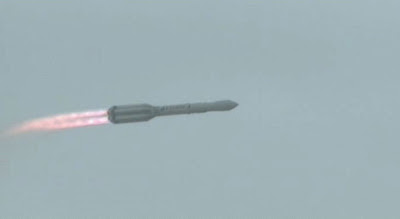 |
| Russian Proton-M Rocket |
Immediately after takeoff, the rocket swerved to one side, tried to correct itself, but instead veered in the opposite direction. It then flew horizontally and started to come apart with its engines in full thrust.
Making a huge arch in the air, the rocket plummeted back to earth and exploded on impact close to another launch pad used for Proton commercial launches.
The crash was broadcast live across the country and fears of a possible toxic fuel leak immediately surfaced following the incident. While no such leak has been confirmed, the rocket was initially carrying over 600 tons of toxic propellants.
There have reportedly been no casualties to surroundings structures and the town of Baikonur was not affected.
 |
| Russian Proton-M Rocket |
Russia lost three Glonass satellites in December 2010 when a Proton-M veered off course and crashed in the Pacific Ocean. The rocket was also equipped with a DM-3 booster, designed and manufactured by the Energia space corporation.
A state investigation commission later concluded that Energia experts miscalculated how much fuel was needed for the DM-3 rocket booster. As a result, the amount of oxidant exceeded the norm by 1-1.5 tons and excessive weight prevented the Proton-M rocket from putting the satellites into their calculated orbit.
Jul 1, 2013
Lockheed Martin F-35B: Born in the USSR?
 |
| Yak-141 |
The American F-35B – the naval version of the Joint Services Fighter – was not designed in Fort Worth, Texas, but in Moscow, Russia. The ‘unique’ lift fan and vectoring tailpipe that allows the F-35B to perform vertical short takeoffs and landings (VTOL) was designed nearly three decades ago by Russia’s Yakovlev aircraft bureau for their supersonic multi-services fighter, the Yak-141.
Need for speed…and more
A good example of Russia’s poor record in naval aviation was the Yak-38 jump jet. Unlike the highly successful British Sea Harrier, the Yak-38 was an apology of a fighter, being outperformed in almost every department by its Western rivals.
As part of the Soviet Navy’s massive expansion under Admiral Gorshkov, in 1975 Yakovlev was ordered to develop a highly versatile aircraft. Having an unprecedented blend of supersonic speed, vertical take-off and landing capability and extended range, its main role would be to defend the Soviet Naval Fleet and shipping lanes. The aircraft would not only operate from aircraft carriers, but also from wheeled landing and takeoff platforms that could be placed throughout the country, allowing the Russian Air Force to come into the picture.
Trying to stay airborne in the turbulent skies of a collapsing empire, Yakovlev started looking for a foreign partner. One of the successes it notched up was the development of the Yak-130 trainer in partnership with Aermacchi of Italy.
China's "Big Concern" About U.S. Cyber Attacks
A Foreign Ministry spokeswoman said Sunday that China is "gravely concerned" about cyber attacks launched by U.S. government agencies against China, which were recently revealed by media reports.
Spokeswoman Hua Chunying made the remarks when asked by a journalist to comment on the media reports that the U.S. side had launched cyber attacks against Chinese telecom operators and Tsinghua University.
After expressing China's grave concerns, Hua said that the reports "again proved that China is the victim of cyber attacks, and we have already lodged representations to the U.S. side."
She reiterated that China opposes all forms of cyber attacks.
Subscribe to:
Comments (Atom)
-
Pakistan has witnessed new defense acquisitions in this decade than any other, and in the center of it all is the new fighter which ...
-
China's Stealth Helicopter It's a stealth heavy attack helicopter. US aviation experts say that it is designed to cou...
-
The terrorist attack on Karachi's Mehran Naval Station on May 22 was conceived and launched by India with the primary objective o...

